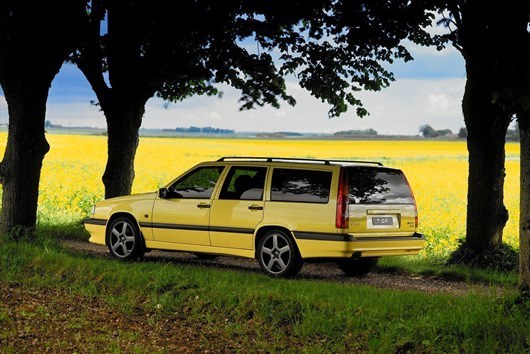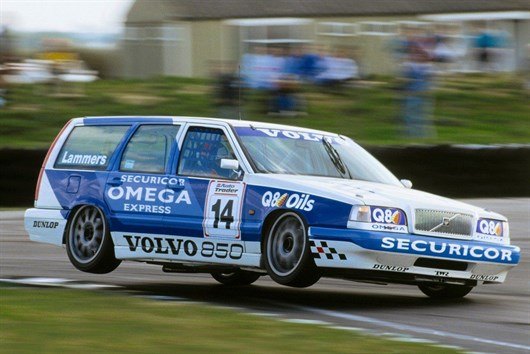Happy Birthday: Volvo 850

It’s often said that looks can be deceptive, and there was certainly a good amount of hoodwinking going on when Volvo launched the 850 in late 1991. The newcomer was an entirely new design, created from the ground-up. The fact that it came out looking like almost every other large Volvo before it was entirely coincidental. Or was it?
The 850 was an astonishing leap forward for Volvo. In appearance, it had the brand’s traditional slab sides and boxiness, but beneath the scaled-down Volvo 740 looks was a new, dynamic front-wheel-drive chassis.
It wasn’t the Swedish firm’s first foray into front-wheel-drive – that came with the oddball Volvo 480 in 1986, but it signified a massive step-change for a company whose previous models were renowned for their tank-like indestructibility, but sadly not their agility.
The 850 was a transformation. Its pliant ride, keen handling, and lively performance (even from the entry-level 2.0-litre, when compared to contemporary rivals) gave it far more dynamic appeal than previous Volvos, while the upmarket cabin was an even bolder move forward. Gone were the Swedish firm’s dowdy corduroy seats and clunky black plastics, to be replaced by a sweeping, modern dash design and new switchgear fonts, which are a Volvo hallmark to this day.

Then there was the T5. Powered by a 230bhp five-cylinder turbocharged engine, the T5 was the car that landed Volvo scores of police car contracts. Here was a vehicle with all the built-in practicality of a hulking great Volvo estate, coupled to the kind of power output reserved for junior supercars. The TWR-developed T5-R that came along a couple of years later turned the wick up to 250bhp, which was more than enough for the chassis to handle, despite its race tuning. The limited run of T5-Rs was followed by the 850R. Which featured a slightly bigger turbo and, in manual form, 250bhp. Both are hard to find today.
Indeed, a race-tuned chassis was something that Volvo could legitimately claim. In order to raise awareness of the 850 and try to change public perception of the brand, Volvo entered an 850 estate into the British Touring Car Championship for the 1994 season, piloted by Rickard Rydell and Jan Lammers. The 850 estate never won a race, but when Volvo switched to the saloon variant for the 1995 season and added Tim Harvey to the driver line-up, it stormed to six race victories. The Volvo 850, then, was not a lumbering brick despite its outward appearances.

The 850 went on to become one of the company’s best sellers, accounting for more than half of Volvo’ s sales in the USA and Australia and giving the firm a strong foothold in the UK fleet market.
The model continued until 1997, when it was replaced by the S70 and V70 saloon and estate, a nod towards the company’s new naming strategy. Fundamentally, though, the new models were little more than an 850 facelift, with rounder headlamps, a softer grille and a revised interior.
It wasn’t until British designer Peter Horbury got his hands on Volvo that the company truly walked away from its traditional boxy image, with its new scallop-sided styling that makes the original S80 and S60, and the 2000 V70 replacement, still look suitably fresh today. But the 850 was the first real game changer from Volvo – on its 25th birthday, maybe the time has finally come to recognise it as a true classic?
Comments
Author
 Craig Cheetham
Craig Cheetham



![2023 Volvo XC90 2.0 B5P [250] Plus Dark 5dr AWD Geartronic](http://images.honestjohn.co.uk/imagecache/url/crop/90x60/https/assets.heycar.co.uk/t_default-export/f_auto/application_assets/vehicles/pictures/1bb7e9e1fbf3e5b058f0e4267c5c26eb/8f68f20f1610166a4a161b6cbf6d4da6.jpg)


Clay Smith on 13 December 2016
I still love my 257,000 mile 1998 v70r which is basically a renamed 850I love the awd but wish it had a stick.
No engine work, transmission work and the oem turbo. Now that's reliability
Peter McGuire on 17 December 2016
Breaking Bad fans will recognize the 850 / V70 wagon as Meth King Gus's ride.Add a comment